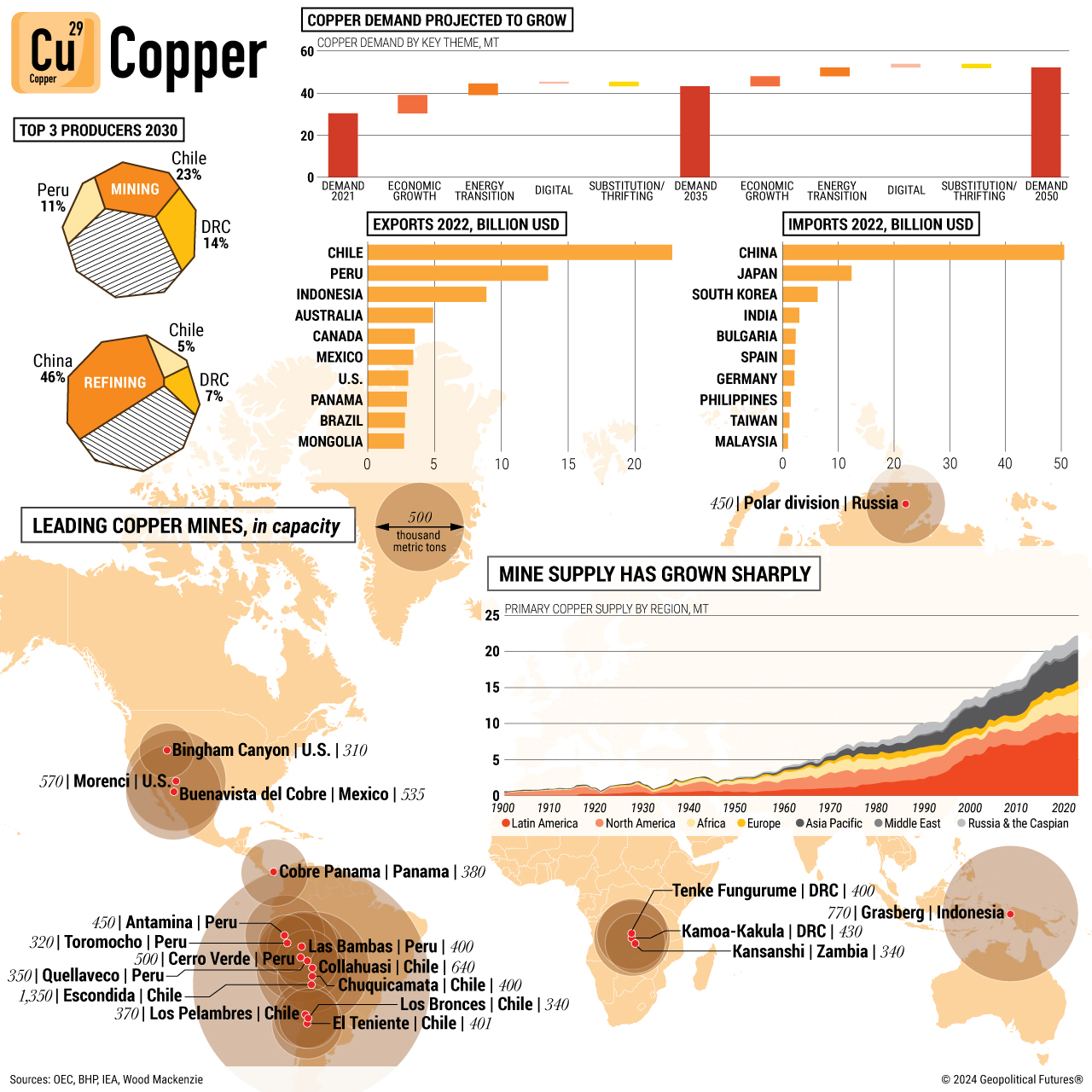Copper is crucial to the global economy, and its importance is only going up. Historically, copper has been vital in construction, electrical networks and transportation. But now it is also in high demand as the world shifts toward green technologies and the electrification of transportation. Due to its high conductivity, durability and resistance to corrosion, copper is used in electric vehicles, solar panels and wind turbines.
Major copper mining regions include Latin America, particularly Chile, which produces a quarter of the global supply. Other key producers are the Democratic Republic of Congo, Peru, Indonesia and China. While Chile dominates copper mining, it refines only 8 percent of the global total, down from 12 percent in 2015, exporting more than half its copper concentrate. That mostly goes to China, the leader of the copper refining industry, controlling about 60 percent of global capacity. By comparison, Europe and the U.S. each contribute 20 percent of global mining production, followed by Australia and Canada. Europe holds the second-largest share of the refining market, with 20 percent.
Geopolitical challenges in copper mining are significant, particularly in Latin America and Africa. Latin America faces growing social and environmental unrest, such as strikes and protests. For example, demonstrations forced the closure of the Cobre Panama mine, and indigenous protesters disrupted mining in Peru. These issues threaten the stability of the copper supply. China’s dominance in copper refining also poses risks, particularly during trade conflicts or supply chain disruptions.






